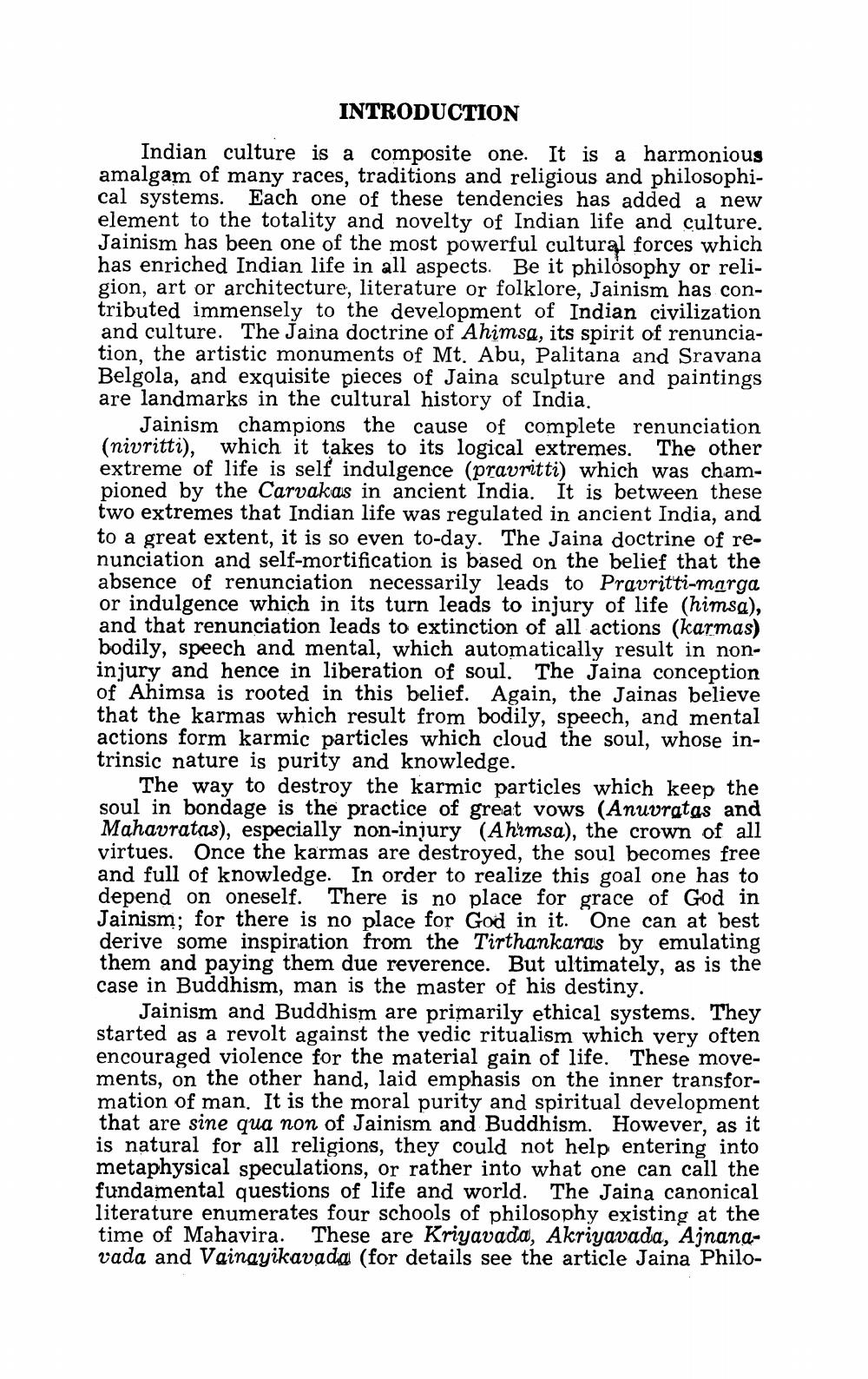Book Title: World Of Jainism Author(s): Vishwanath Pandey Publisher: Vishwanath Pandey View full book textPage 8
________________ INTRODUCTION Indian culture is a composite one. It is a harmonious amalgam of many races, traditions and religious and philosophical systems. Each one of these tendencies has added a new element to the totality and novelty of Indian life and culture. Jainism has been one of the most powerful cultural forces which has enriched Indian life in all aspects. Be it philosophy or religion, art or architecture, literature or folklore, Jainism has contributed immensely to the development of Indian civilization and culture. The Jaina doctrine of Ahimsa, its spirit of renunciation, the artistic monuments of Mt. Abu, Palitana and Sravana Belgola, and exquisite pieces of Jaina sculpture and paintings are landmarks in the cultural history of India. Jainism champions the cause of complete renunciation (nivritti), which it takes to its logical extremes. The other extreme of life is self indulgence (pravritti) which was championed by the Carvakas in ancient India. It is between these two extremes that Indian life was regulated in ancient India, and to a great extent, it is so even to-day. The Jaina doctrine of renunciation and self-mortification is based on the belief that the absence of renunciation necessarily leads to Pravritti-marga or indulgence which in its turn leads to injury of life (himsa), and that renunciation leads to extinction of all actions (karmas) bodily, speech and mental, which automatically result in noninjury and hence in liberation of soul. The Jaina conception of Ahimsa is rooted in this belief. Again, the Jainas believe that the karmas which result from bodily, speech, and mental actions form karmic particles which cloud the soul, whose intrinsic nature is purity and knowledge. The way to destroy the karmic particles which keep the soul in bondage is the practice of great vows (Anuvratas and Mahavratas), especially non-injury (Ahimsa), the crown of all virtues. Once the karmas are destroyed, the soul becomes free and full of knowledge. In order to realize this goal one has to depend on oneself. There is no place for grace of God in Jainism; for there is no place for God in it. One can at best derive some inspiration from the Tirthankaras by emulating them and paying them due reverence. But ultimately, as is the case in Buddhism, man is the master of his destiny. Jainism and Buddhism are primarily ethical systems. They started as a revolt against the vedic ritualism which very often encouraged violence for the material gain of life. These movements, on the other hand, laid emphasis on the inner transformation of man. It is the moral purity and spiritual development that are sine qua non of Jainism and Buddhism. However, as it is natural for all religions, they could not help entering into metaphysical speculations, or rather into what one can call the fundamental questions of life and world. The Jaina canonical literature enumerates four schools of philosophy existing at the time of Mahavira. These are Kriyavada, Akriyavada, Ajnanavada and Vainayikavade (for details see the article Jaina PhiloPage Navigation
1 ... 6 7 8 9 10 11 12 13 14 15 16 17 18 19 20 21 22 23 24 25 26 27 28 29 30 31 32 33 34 35 36 37 38 39 40 41 42 43 44 45 46 47 48 49 50 51 52 53 54 55 56 57 58 59 60 61 62 63 64 65 66 67 68 69 70 71 72 73 74 75 76 77 78 79 80 81 82 ... 132
